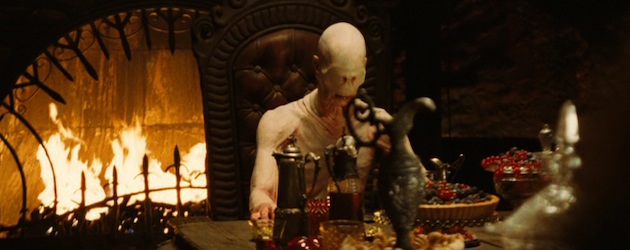Eugenio Caballero

I believe a lot in one’s first intuition. I’m a Latin, I’m Mexican, so my approach is not on the cold side, it’s very visceral.
AS: The first intuition you’re talking about, is that when you first read the script?
EC: When you first read the script and make notes. It’s like a switch flips in your head. When you read a script you start that dream. You find answers to a lot of questions just by walking or by reading. You’re looking for things and creating, but mainly you’re just getting into a mood where you’re more receptive to the things around you. I love that process. It’s one of the things that I enjoy the most.
I feel a lot of joy in my job. One of the other things that I enjoy is the moment when you decide a set is ready. You’re not lacking anything and there’s nothing there that shouldn’t be. It’s just an amazing moment. You’ve been working months, sometimes years, thinking about and creating a space. Suddenly it’s there and it tells a story full of layers and complexity. This is very important for me in filmmaking, not just in design. A script that has many layers lets you as a designer put a lot of those layers into the final film.
AS: Do you find when you look at that final set that it’s similar to your first intuition?
EC: It all depends. Logically sometimes it’s different because there’s a long process of construction and a lot of people involved. Normally the main ideas remain. The ones you had to defend with all of your heart. For me one of the things that experience brings is that during the process of creating a set I make sure not to lose a lot of the original concepts from the drawings that we first made. Even though all these practical issues come up when you’re pre-producing or building or scenicing or dressing or propping a set, you make sure that the original ideas do not get lost. That’s very important. Sometimes practical things jeopardize that and it’s something that we as designers really have to defend.
AS: What tools do you use to defend those original ideas? Sketches? Do you also make physical models or use 3D programs?
EC: Depends on the project. When I’m designing, the first thing I do is make a little book, a research book, and that book starts growing and growing and growing. The book reflects the spirit of the film.
Normally what I do in the beginning is put together these references and notes, even before we start making any sketches, in order to present and discuss ideas with everybody. With the director, with my own team. Then the second part is when we start scouting and have a better idea of what we want to do. Then you start sketching certain things. And those sketches evolve into concept art and from that concept art you start doing more technical drawings or models or 3D. It all depends on the complexity of the sets and the time and resources that you have. The most important thing is that you know the tools so you can adapt for specific cases. I still love to make physical models for construction. I love to see these miniatures and play with them with my hands. But I also really enjoy the digital tools.